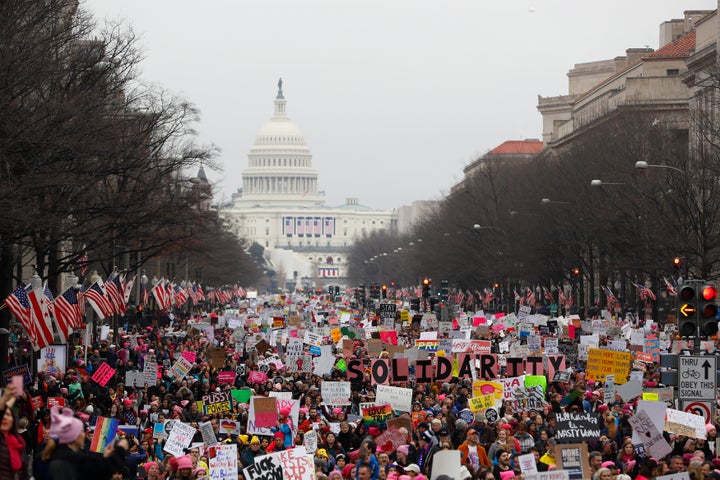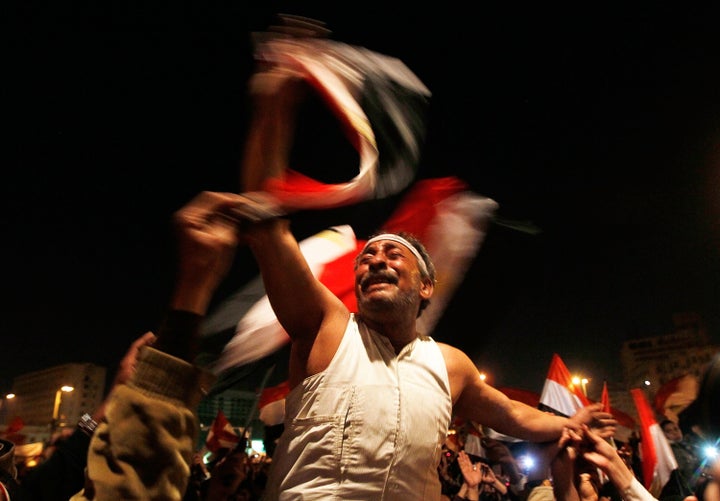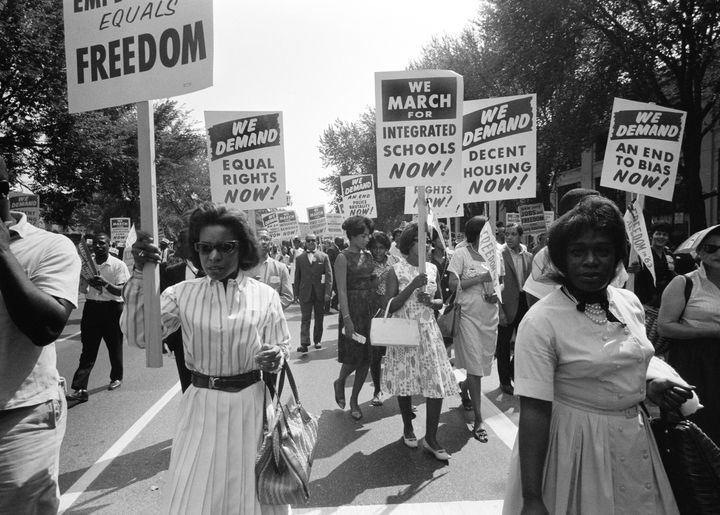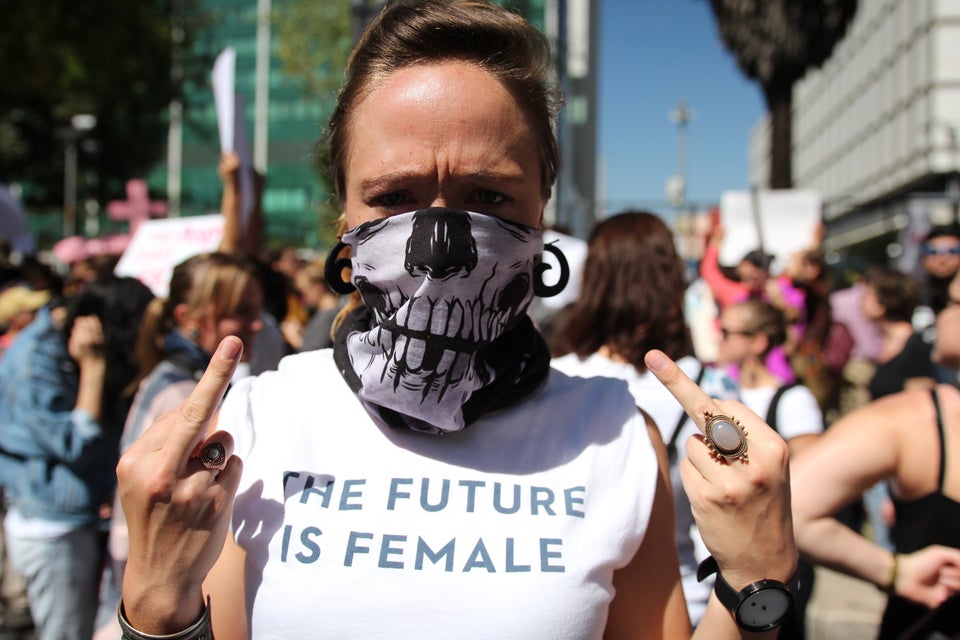
One of the key aspects of democracy is participation and debate, including disagreement. For a healthy democratic system to survive, a diverse range of opinions must be heard. Being on the outside of popular opinion is just as important as being on the inside. But what is the role of the opposition, and how can it ensure its ideas are not only heard but also enacted?
In many cases, the opposition takes to the streets. The right to peaceful assembly is one of the most fundamental rights assured to the American people. But a mere gathering of likeminded individuals is not enough to sway the party in power to act no matter how many thousands, or even millions, show up. The opposition needs to go beyond demonstration.
Craig Calhoun, a renowned social scientist and the president of the Berggruen Institute, describes the 19th-century origin of the term “social movement” as “the popular mobilization that brought attention and possibly solutions to the social question.” The “social question” was how inequality and poverty should be addressed. Today, in the 21st century, we continue to ask ourselves this question and employ similar tactics to reach the same end.
How can a movement bring both attention and solutions? For an opposition movement to succeed and remain sustainable, it must have four critical components: a narrative, a plan, leadership and organization. Without these ingredients at its core, the movement loses energy, credibility and in the worst of cases, leads to chaos. Chaos is the greatest gift to parties in power, especially dictators, because it becomes an open invitation to exploit the pandemonium by promising to deliver order and stability. More often than not, this “order and stability” comes at a huge cost to liberty and social progress.
“Chaos is the greatest gift to parties in power, especially dictators.”
The revolutionary wave of protests across the Arab world in 2010, known as the Arab Spring, suffered a similar fate. The leaders of several of these uprisings put forth constitutional democratic governance as their ultimate goal, but Tunisia was the only country where it was achieved. In Egypt, the opposition never developed a plan for what should occur once its demands were met. The opposition also suffered from an absence of leadership.
The French Revolution of the late 1700s is a good example. Influenced by the “enlightened” principles of that era, the French Revolution encapsulated a powerful narrative of individual rights and equality. But the passionate fervor of the people quickly descended into the Reign of Terror. A functional constitution became unobtainable. The rule of law was absent. Ideological divides tore the movement apart and destroyed the opportunity to put forward a clear vision for the future.
Terror became the only source of order. As a leader of the Jacobins, Maximilien Robespierre, said in a speech, “Terror is nothing else than justice ― prompt, severe, inflexible.” Robespierre, of course, was later guillotined without trial, destroyed by the very revolution he helped create. It took Napoleon’s strong leadership and charisma to bring an end to the chaos, at the cost of the democratic ideals the movement had begun with.

In an interview with The WorldPost, the Egyptian activist Wael Ghonim described the dangers of a leaderless movement: “Instead of having a vision for a future that we agreed on, we were all led into a cul-de-sac of unintended consequences by spontaneous and reactive decision-making.” As a result, Egypt’s short-lived democratic experiment ended in a military coup, mass arrests, a brutal crackdown on supporters of the previous government and political stalemate. Other countries such as Syria and Libya, whose uprisings contained the same deficiencies as Egypt’s, descended into even greater turmoil.
Despite being rooted in a deep democratic tradition with a stable and long-lasting constitution, opposition movements in the United States are also vulnerable to similar problems. The Occupy Wall Street protests emerged from the fallout of the 2008 financial crash and were partly a condemnation of inequality and corporate greed. But that narrative failed to develop into a plan, creating disorganization from within.
Without strong and inspiring leadership, there was no one to unite the movement behind specific solutions. “The problem with the movement,” wrote New York Times columnist Andrew Ross Sorkin after visiting the protests in Zuccotti Park, “was that its mission was always intentionally vague. It was deliberately leaderless.” Though some praise the protesters for creating a national dialogue around inequality, the protests failed to transform media attention and inertia into systemic change.

What movements worked? The American civil rights movement of the 1960s was the defining moment of a generation. Its powerful narrative, born from the legacy of slavery and generations of oppression, proclaimed that all men, regardless of skin color, are created equal. That idealist narrative evolved into action plans that led to the ultimate goal of combatting racial segregation and passing federal laws that protected African Americans from discrimination.
The movement’s campaigns of nonviolent civil resistance ― boycotts, sit-ins and marches ― were effective because they were highly organized and their goals were broadly understood. The movement was also blessed with a unique group of leaders. One of several icons of that time, Martin Luther King, Jr., put forward ideas and words that inspired millions and reverberate to this day. When a narrative, plan, organization and leadership all came together, the result was profound: actual legislation changed the government and ideas transformed the country forever.
“The civil rights movement's campaigns were effective because they were highly organized and their goals were broadly understood.”
However, the impact of a movement does not imply a beneficial outcome to society, as evidenced by the horrors of the Soviet and Chinese revolutions. In both cases, the revolutions that would overtake the world’s largest countries in size and population (respectively) started with a simple but powerful narrative ― uniting workers and uniting peasants. Ideological yet ruthless leaders ― Lenin and Mao ― generated infectious enthusiasm. They benefitted from a highly organized, hierarchical structure that fostered obedience and discipline.
These stories have more in common than they may appear to on the surface. Lasting solutions to social problems can only be realized when a powerful narrative and a concrete plan emerge from within a well-organized movement that has popular and charismatic leaders. These ingredients can be found in just about any successful movement in human history. Without them, the final result of a movement is uncertain ― often, it won’t be the one it set out to achieve.

